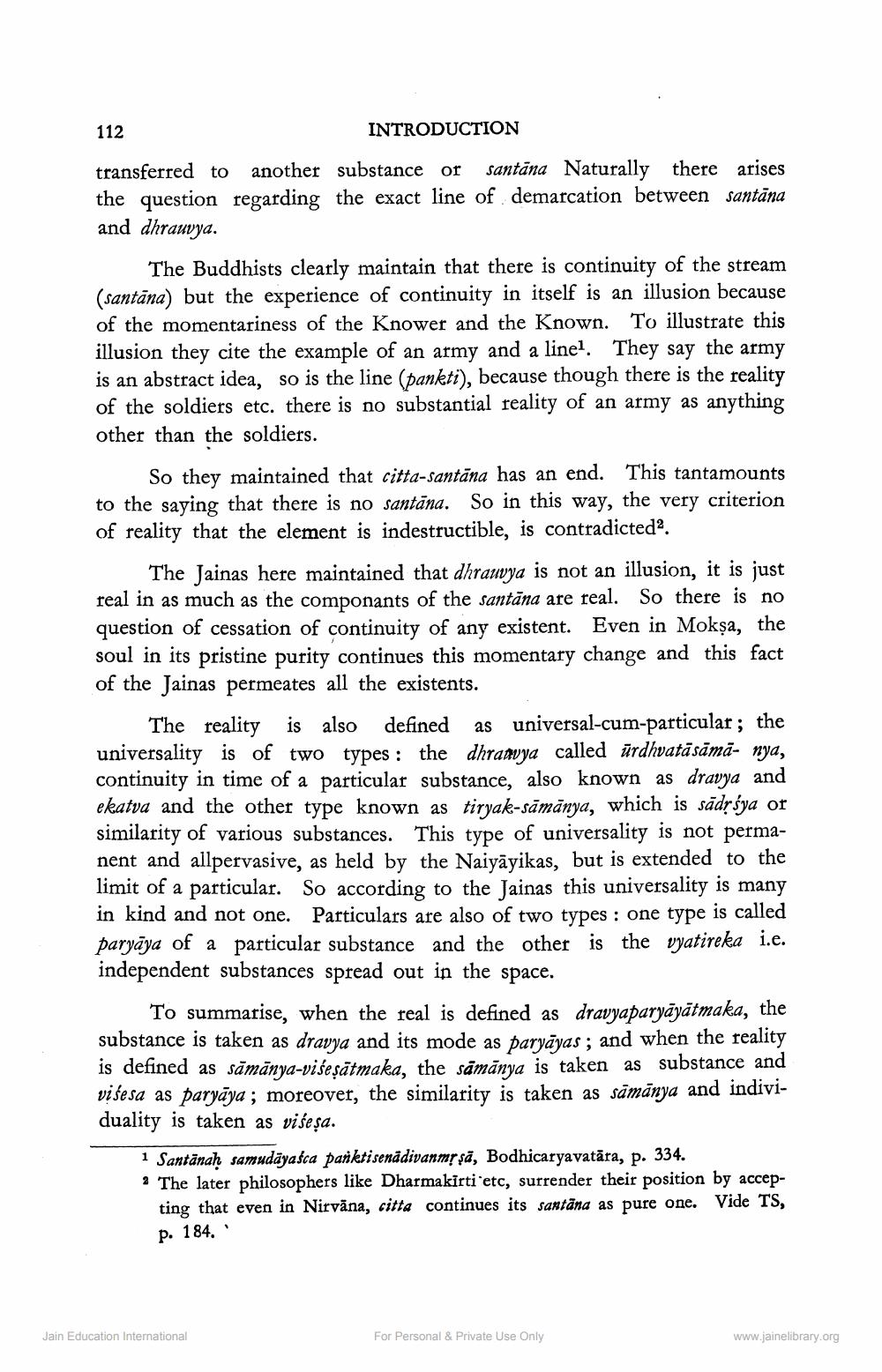________________
INTRODUCTION
transferred to another substance or santana Naturally there arises the question regarding the exact line of demarcation between santāna and dhrauvya.
112
The Buddhists clearly maintain that there is continuity of the stream (santana) but the experience of continuity in itself is an illusion because of the momentariness of the Knower and the Known. To illustrate this illusion they cite the example of an army and a line1. They say the army is an abstract idea, so is the line (pankti), because though there is the reality of the soldiers etc. there is no substantial reality of an army as anything other than the soldiers.
So they maintained that citta-santana has an end. This tantamounts to the saying that there is no santana. So in this way, the very criterion of reality that the element is indestructible, is contradicted2.
The Jainas here maintained that dhrauvya is not an illusion, it is just real in as much as the componants of the santana are real. So there is no question of cessation of continuity of any existent. Even in Moksṣa, the soul in its pristine purity continues this momentary change and this fact of the Jainas permeates all the existents.
The reality is also defined as universal-cum-particular; the universality is of two types: the dhranya called urdhvatāsāmā- nya, continuity in time of a particular substance, also known as dravya and ekatva and the other type known as tiryak-sāmānya, which is sadṛśya or similarity of various substances. This type of universality is not permanent and allpervasive, as held by the Naiyayikas, but is extended to the limit of a particular. So according to the Jainas this universality is many in kind and not one. Particulars are also of two types: one type is called paryaya of a particular substance and the other is the vyatireka i.e. independent substances spread out in the space.
To summarise, when the real is defined as dravyaparyāyātmaka, the substance is taken as dravya and its mode as paryāyas; and when the reality is defined as sāmānya-višeṣātmaka, the samanya is taken as substance and višesa as paryaya; moreover, the similarity is taken as sāmānya and individuality is taken as viseșa.
1 Santanaḥ samudayaśca panktisenädivanmṛṣā, Bodhicaryavatāra, p. 334.
The later philosophers like Dharmakirti'etc, surrender their position by accepting that even in Nirvana, citta continues its santana as pure one. p. 184.
Vide TS,
Jain Education International
For Personal & Private Use Only
www.jainelibrary.org




